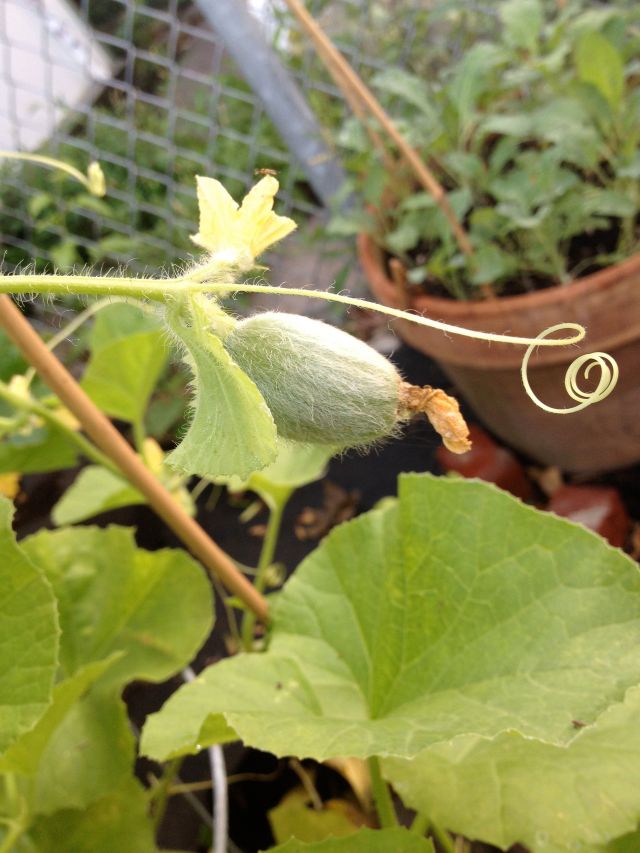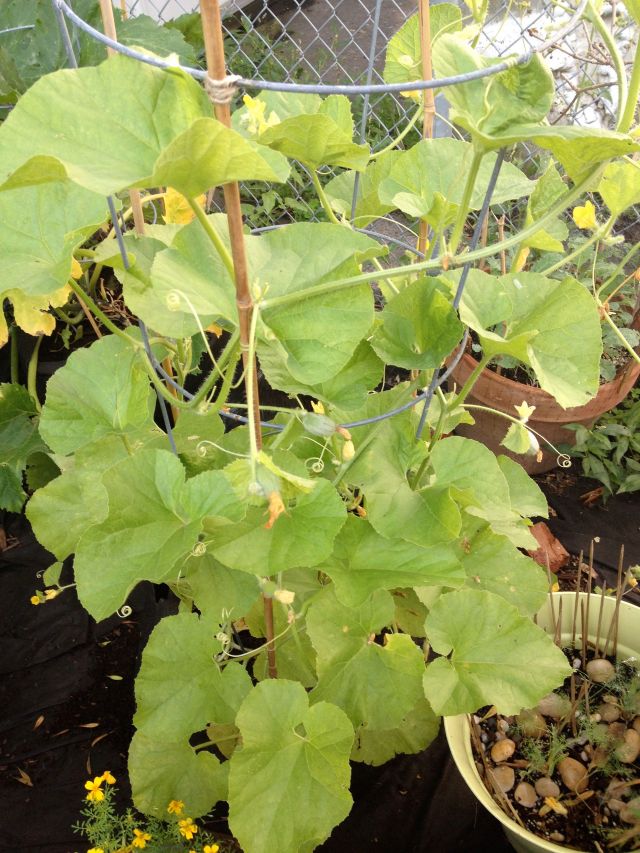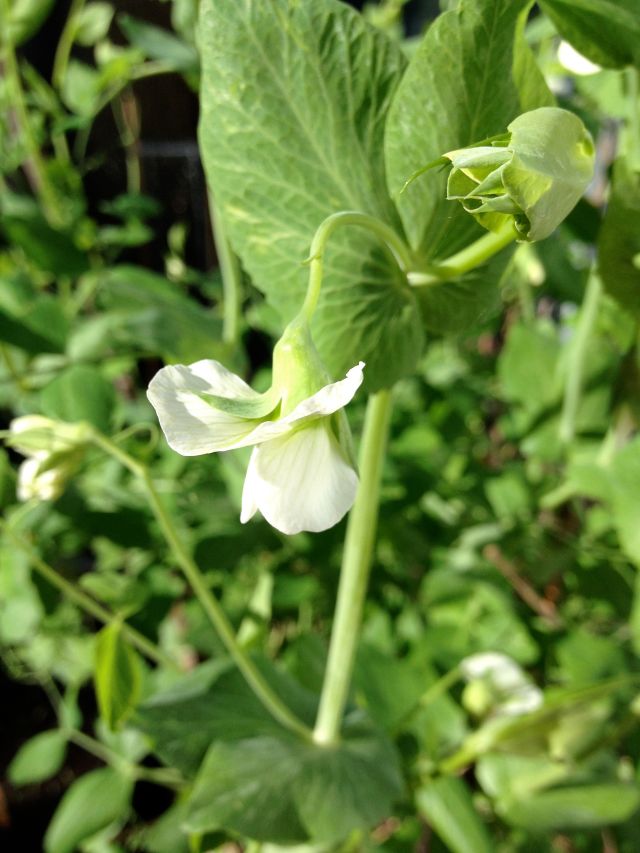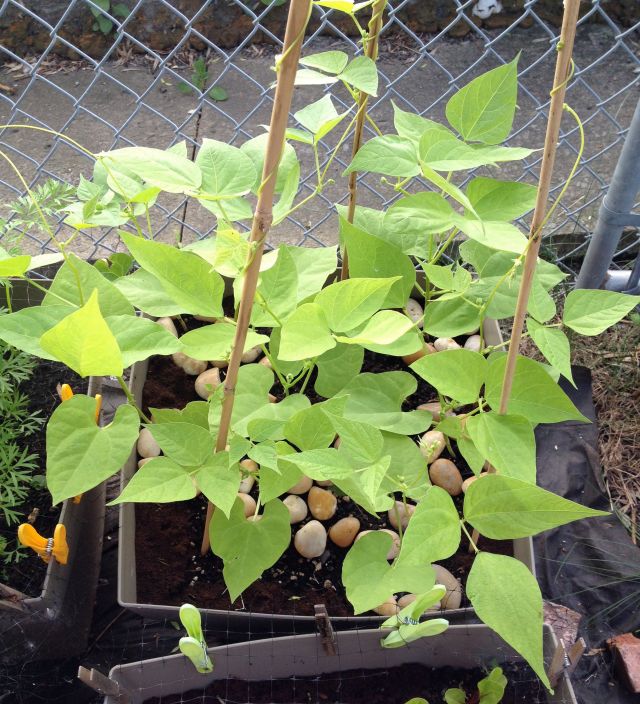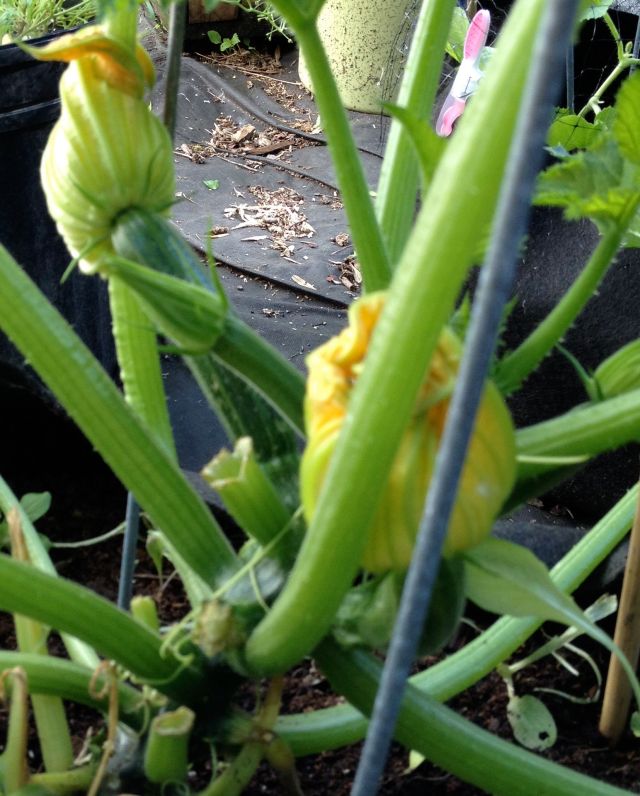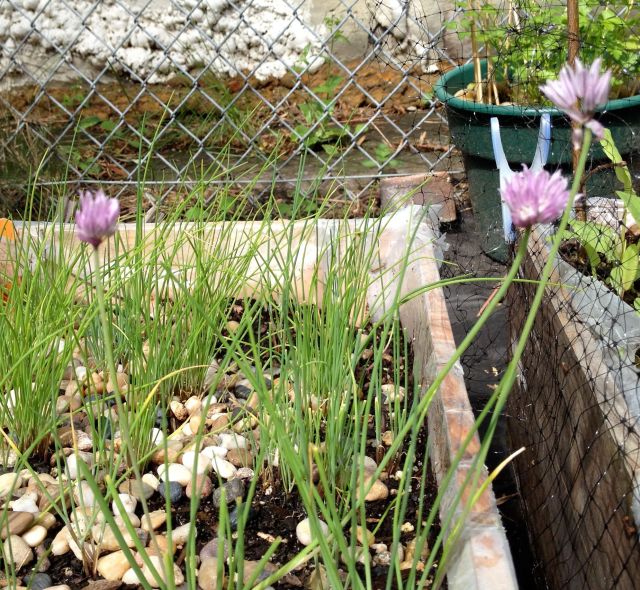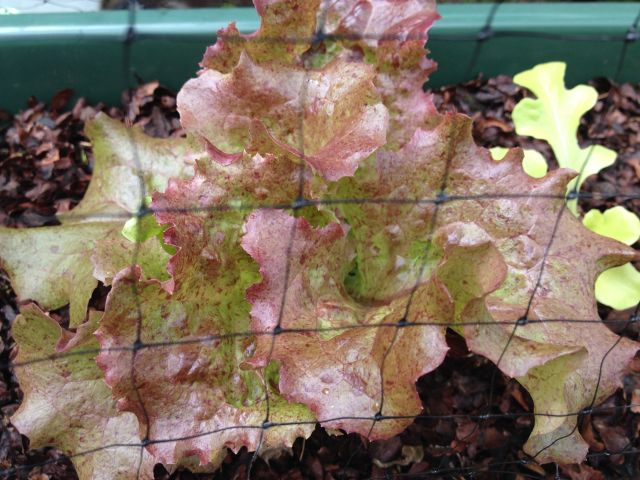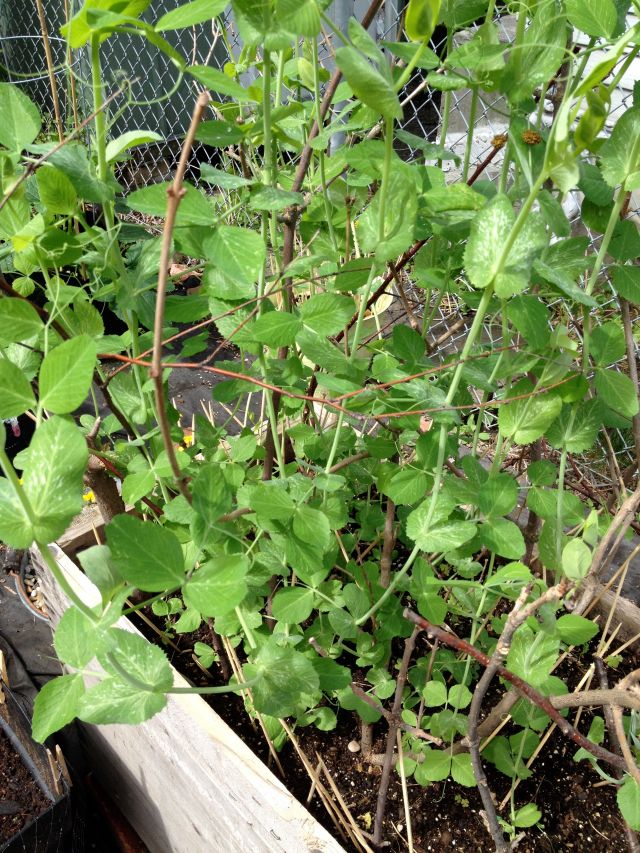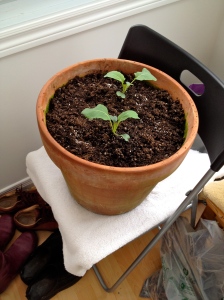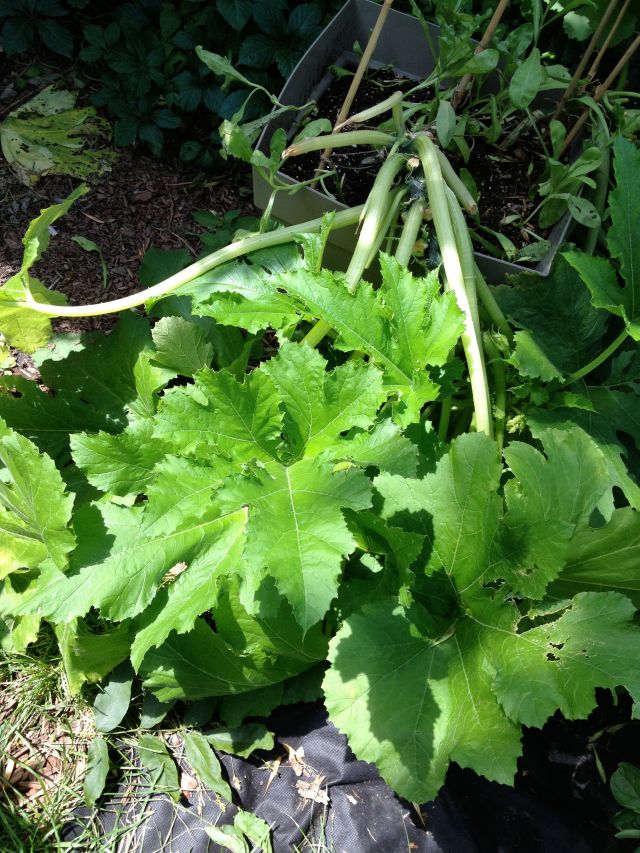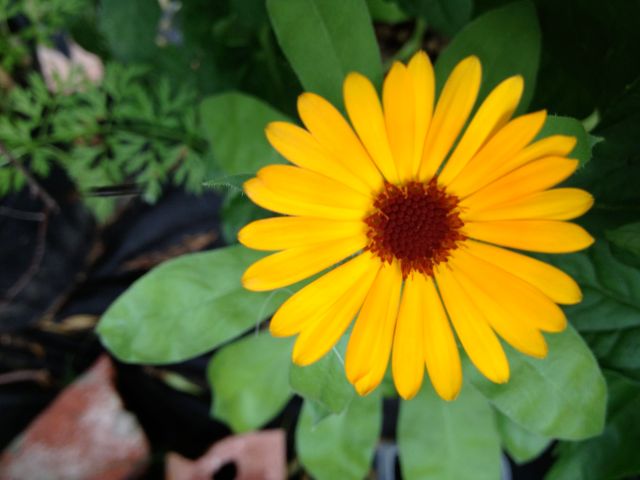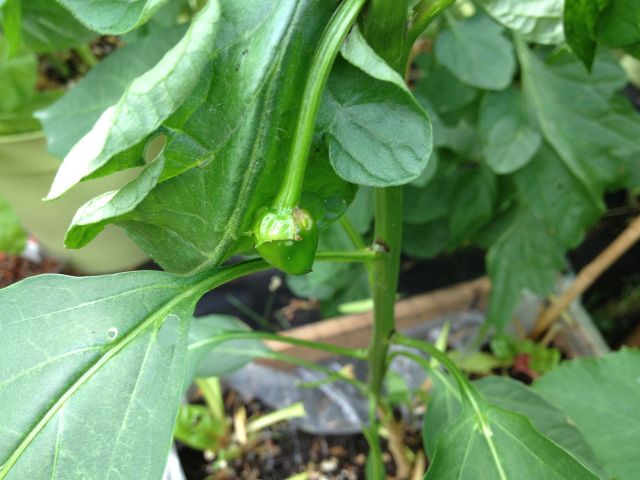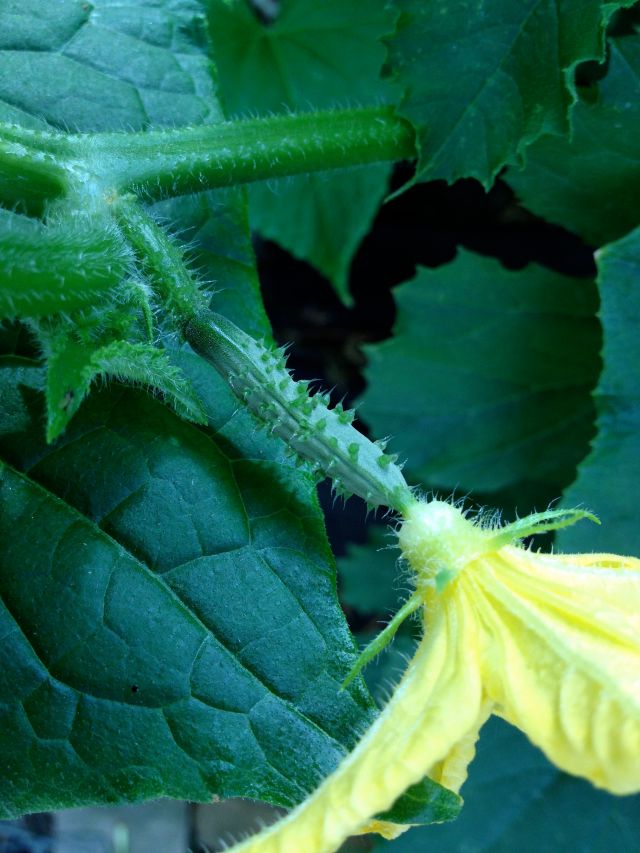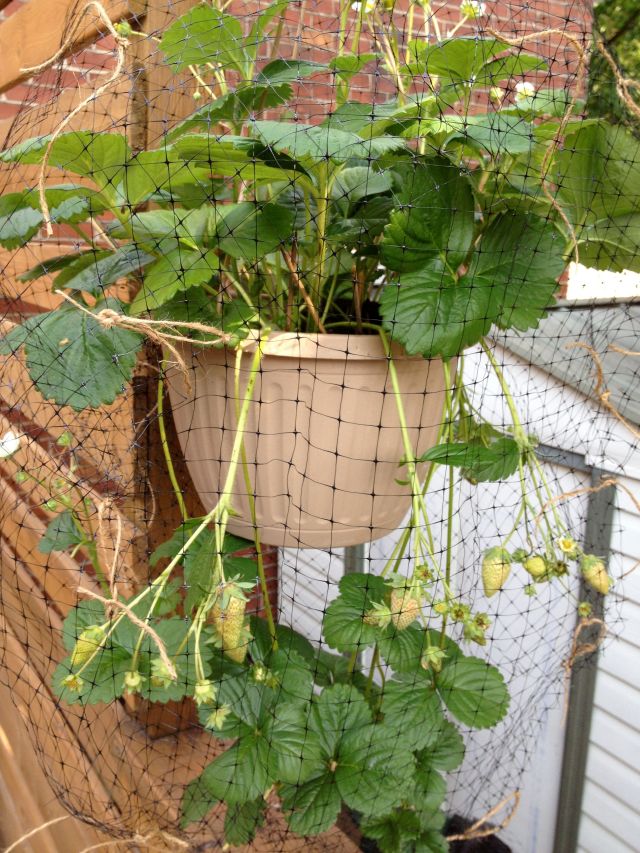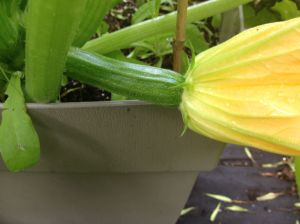I have built an elaborate, possibly futile anti-squirrel fortress for the tomatoes.

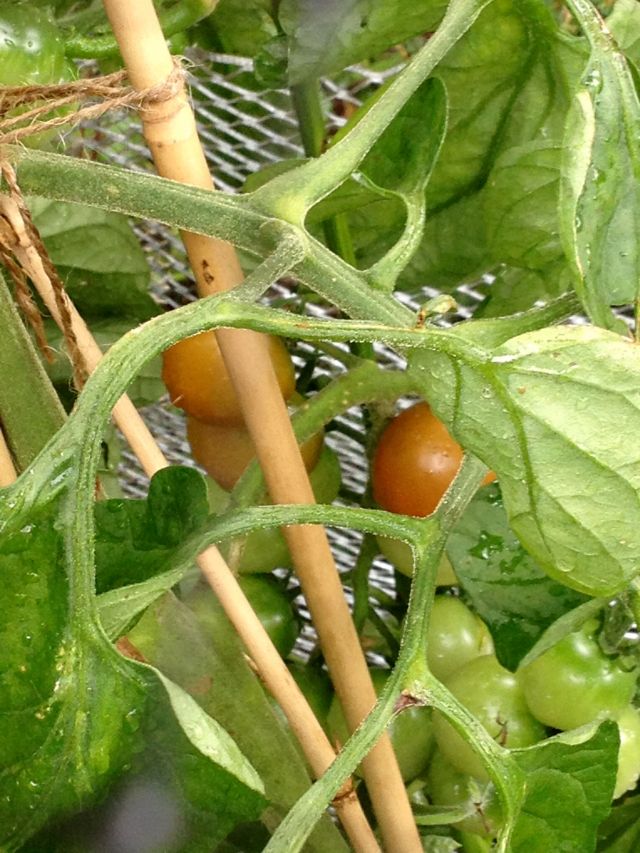


So far, it seems to have been effective. Before I built it, I found several green tomatoes scattered around the pots, some with bites out of them. Since I constructed this – a chicken-wire fence, a spiderweb of twine and rubber bands on bamboo stakes, topped with a generous blanket of netting anchored at the bottom with bricks – the plants seem to have been undisturbed. The trickiest part will be getting at them; three cool days have meant that they haven’t needed to be watered yet, but tomorrow I’ll need to get in there, and it may be quite a process.
In the meantime, the cabbage worms ate my kale.
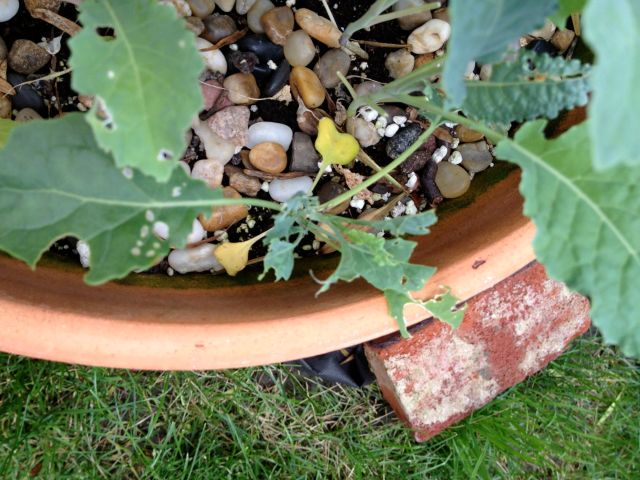
I’ve put in some collards and lettuce for the fall; I’ll plant some more lettuce after the worst of the summer heat has passed.
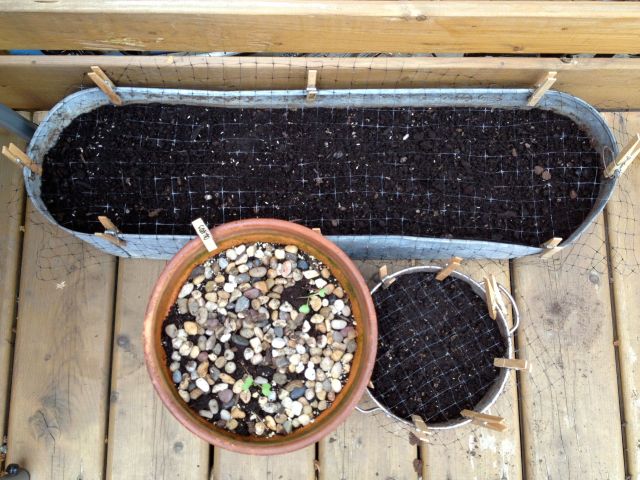
The balcony herbs are doing pretty well.
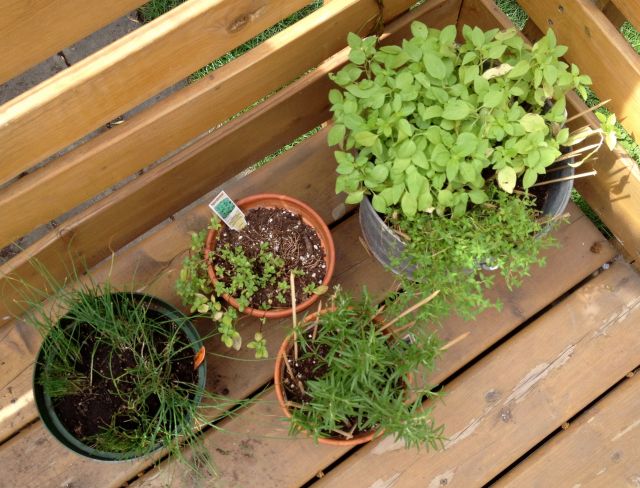

However, the Moroccan mint has been developing brown spots on its leaves. I’ve moved it into more direct sunlight to see if that helps.
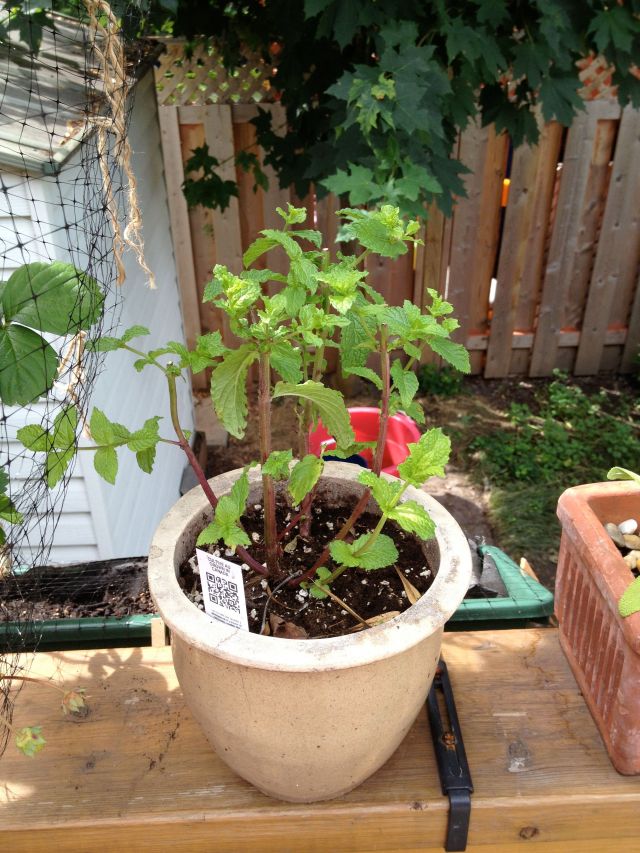
The squirrels have not been entirely deterred by the netting on the strawberries, but it seems to have prevented total decimation. That said, many of the berries have developed brown spots and, after a few delicious ones in the beginning, the rest have been bland and bitter. I haven’t determined what’s causing this; maybe you have some ideas?

I’m looking forward to some more dill.

The cress is not happy, but the chocolate mint is doing fine.
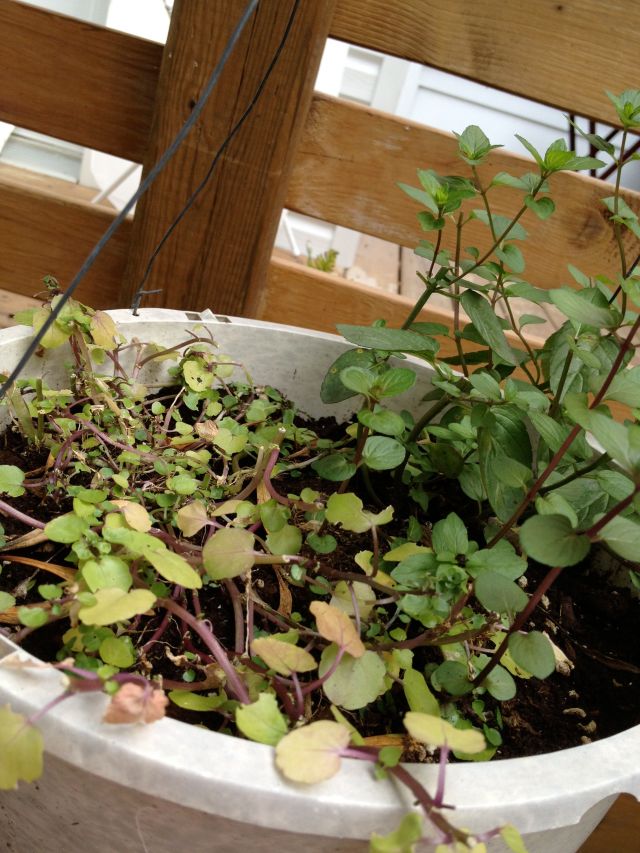
The zucchini has gone through a couple of traumas, including falling over and battery by thunderstorms. It looks fairly happy now, but it hasn’t fruited much for the last couple of weeks. I’m hoping it’ll pull itself together, especially if we get some hot weather again soon.

The cucumber is doing GREAT right now, and the nasturtiums are making everything cheerful.


I’m looking forward to a second crop of beans.

However, a couple of bean plants have developed these spots on their lowest leaves. I’m not sure whether this is something to be concerned about.

One poblano fell from the plant during a rainstorm, so I chopped it up to fry in a peppers-and-onions dish and it added a lovely spice. I can’t wait for this one to fully ripen.

I’m hopeful that August will bring a big pepper crop. The bell peppers have been struggling but are starting to flower more profusely now, and the poblanos in the shadier part of the garden are showing signs of maturity too. I’m thinking chiles rellenos.

And finally, after a struggle that began in January and has seen the death of many seedlings, it seems I’m able to grow a catnip plant.

Next year, I may try to scale back a bit. (Do I really need four tomato plants? My husband can’t eat tomatoes. Two zucchini plants in one pot is overkill. Seven poblano plants – what on earth?) However, I suspect that in January, when browsing seed catalogues will be my only way to feel like a gardener, plans may change.
Even if everything keels over tomorrow, my garden has been a godsend this year. In the moments (many of them) when I feel that owning a house is too much for me to handle, I look out at the back yard and remind myself that none of this would have been possible in our cozy second-floor Outremont apartment. Wandering through the pots every morning, coffee in hand, cats hiding under the foliage, has turned every day into an adventure.
Maybe next year I’ll start caring about the flowers in the front a little more. I expect the neighbours will appreciate that.
I’m trying to see this whole process as an education.
